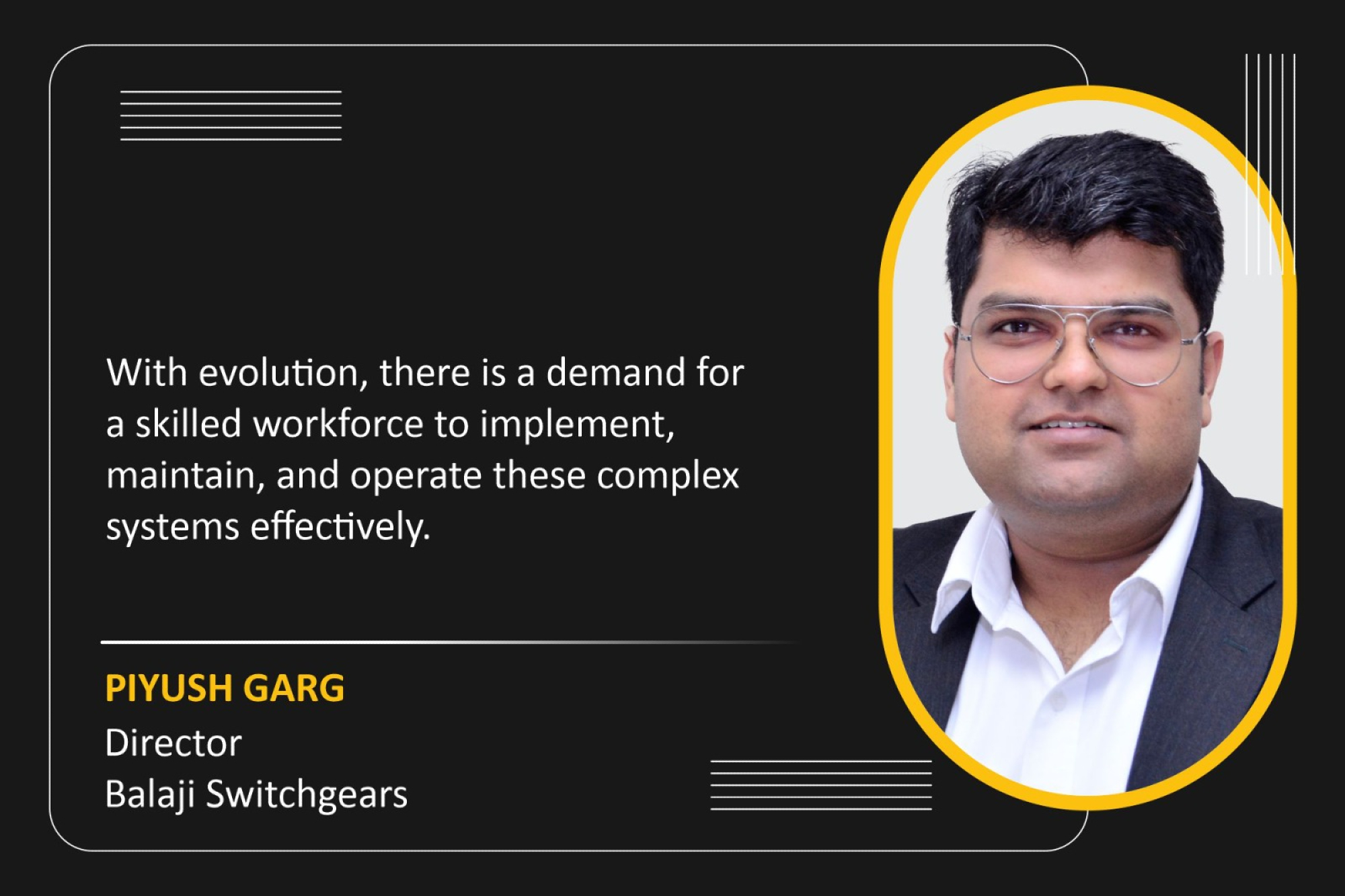IoT and advanced sensor technologies enhancing switchgear reliability
By EPR Magazine Editorial November 14, 2024 2:57 pm IST
By EPR Magazine Editorial November 14, 2024 2:57 pm IST

Enhancing cybersecurity measures is vital for protecting data integrity, and collaborating with tech providers can optimise switchgear compatibility, strengthening operational reliability in smart grid environments.
As the Indian government prioritises advanced power grids and energy security, the demand for innovative switchgear solutions rises. By integrating smart digital technologies, manufacturers can enhance reliability, sustainability, and safety. This ensures that their products remain competitive in a rapidly evolving regulatory landscape while supporting the transition to a smarter energy future. Piyush Garg highlights the priorities for energy security in talks with the EPR Magazine.
How can switchgear manufacturers leverage smart technologies to enhance energy security?
The Indian government’s focus on advanced Power Grids increases the need for energy security. Switchgear manufacturers can innovate by integrating smart digital technologies. Embedding IoT and advanced sensors in switchgear can offer features like real-time monitoring, predictive maintenance, and rapid fault detection, minimising downtime and enhancing reliability. Additionally, developing compact, modular switchgear systems can aid in efficient space utilisation which is crucial for urban infrastructure and renewable energy installations. Manufacturers can also focus on energy-efficient designs, incorporating eco-friendly insulating materials to reduce environmental impact and improve operational efficiency. Emphasising cybersecurity in switchgear ensures data integrity and system resilience against threats.
How can manufacturers enhance switchgear compatibility with smart grids and IoT technologies?
Manufacturers can ensure switchgear compatibility with smart grid and IoT technologies by adopting open communication protocols which may help in standardising data exchange across devices. Integrating advanced sensors and IoT components will enable real-time monitoring, predictive maintenance, and fault detection, which boost reliability. A modular design can always support the upgradation of systems. Enhancing cybersecurity measures is also crucial to protect data integrity and maintain operational reliability in connected environments. Collaborating with other tech providers to develop interoperability solutions can further optimise switchgear for smart grids. Testing for high resilience under varying conditions ensures that these systems can handle the demands of a modern, interconnected energy infrastructure while maintaining consistency in performance.How can switchgear makers ensure their products are safer, sustainable and remain competitive amid evolving regulations?
Working with industry leader Schneider Electric, we have observed their Switchgears and Automation products support the sustainability practice and it is very impressive. The product composition of a certain percentage of recycled plastic helps in the reduction of the impact on the environment. The manufacturer claims an extended life with a minimum of 5 percent higher durability of these products and easily replaceable parts. The energy efficiency of these products is approx 10 percent higher than average market products. The manufacturer aims at minimising the use of hazardous components in these products while also providing RoHS and REACH substances information. To ensure green premium quality, a full Life Cycle Assessment is also performed. Such product composition practice should also be adopted by other manufacturers in the industry to control the alarming e-waste generation, estimated at 53.6 million metric tons.
How can targeted training programmes enhance workforce skills for smart grid technologies?
With the rise in investments and demand for smart grids, renewable energy integration, and digital switchgear, these innovations drive efficiency. It enhances reliability, reduces environmental impact aligning with global sustainability goals. With evolution, there is a demand for a skilled workforce to implement, maintain, and operate these complex systems effectively. This need for skilled talent underscores the importance of targeted training programmes and partnerships with educational institutions to develop expertise in emerging areas like IoT, cybersecurity, and data analytics. Investing in workforce development ensures that the sector can adapt to technological advancements, meet regulatory requirements, and maintain a competitive edge.
We use cookies to personalize your experience. By continuing to visit this website you agree to our Terms & Conditions, Privacy Policy and Cookie Policy.